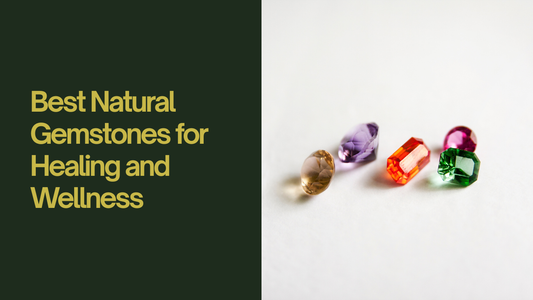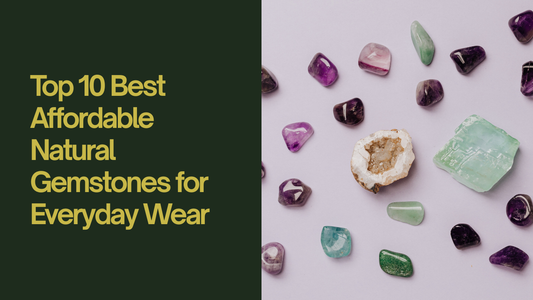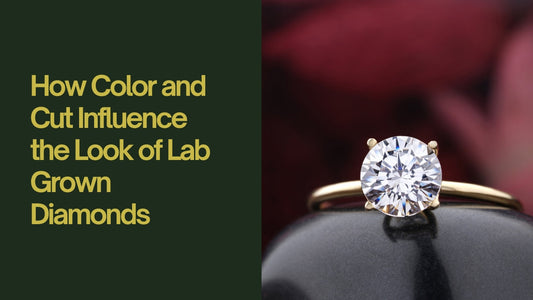
History of Sapphires: A Gemstone Loved by Royalty
Sapphires have long been associated with royalty, power, and elegance. For centuries, this stunning blue gemstone has captured the hearts of kings, queens, and noble families around the world. In this blog, we’ll explore the fascinating history of sapphires, how they became a symbol of royalty, and their significance throughout history.
1. Ancient Times: Sapphires as a Symbol of Heaven
Sapphires have been admired for thousands of years, dating back to ancient civilizations. In ancient Greece and Rome, people believed that sapphires were connected to the heavens and protected wearers from envy and harm. These cultures associated the deep blue color of the gemstone with the sky and the divine.
In Persia, sapphires were believed to be so powerful that the Earth was said to rest on a giant sapphire, and its reflection was what gave the sky its blue color. This connection to the heavens made the stone highly valuable in both spiritual and royal circles.
2. Sapphires in Medieval Europe: The Royal Blue Stone
In medieval Europe, sapphires became the gemstone of choice for royalty and clergy. Kings and queens wore sapphires to symbolize wisdom, virtue, and protection from harm. The gem was often set in crowns, rings, and royal jewelry. Many believed that sapphires could protect them from harm or betrayal, making them popular among rulers.
One famous example of sapphire's connection to royalty is the British Crown Jewels. The Imperial State Crown, worn by British monarchs during their coronation, features the stunning St. Edward’s Sapphire, which dates back to the 11th century.
3. Sapphires and Religion: A Symbol of Faith
Sapphires were not just a symbol of power for royalty, but they also had deep religious significance. The clergy wore sapphires to represent heaven and purity. In Christianity, the blue color was linked to the Virgin Mary, and sapphires were often used in religious rings and other sacred items.
In the Bible, sapphires are mentioned as a symbol of purity and divine favor. It was believed that the Ten Commandments were written on tablets of sapphire, adding to the gemstone’s sacred reputation.
4. Famous Royal Sapphires: From Princess Diana to Queen Victoria
Throughout history, many famous royal figures have worn sapphires. One of the most well-known examples is Princess Diana's sapphire engagement ring, which now belongs to Kate Middleton, the Duchess of Cambridge. The ring, with its deep blue 12-carat sapphire surrounded by diamonds, became iconic and further cemented the gemstone’s royal status.
Queen Victoria also had a special connection with sapphires. Prince Albert gave her a stunning sapphire brooch, which she wore on her wedding day. To this day, this brooch remains one of the most treasured pieces of royal jewelry.
5. Sapphires in Modern Royalty
Sapphires remain a favorite among modern royals. Queen Elizabeth II owns several sapphire pieces, including the George VI Victorian Suite, a set of sapphire and diamond jewelry given to her by her father, King George VI, in 1947. The suite includes a sapphire necklace, earrings, and a bracelet, which Queen Elizabeth has worn on several important occasions.
In addition to their popularity in the British royal family, sapphires are cherished by other royal families around the world. The gemstone is often seen in royal crowns, tiaras, and jewelry collections, continuing its centuries-old association with luxury and power.
6. The Mystical Powers of Sapphires
Beyond their royal significance, sapphires were also believed to have mystical powers. In ancient times, people thought that sapphires could protect against poison, evil spirits, and diseases. Warriors and soldiers sometimes wore sapphires in battle, believing the gemstone would protect them from harm and bring them victory.
In addition to protection, sapphires were also believed to bring wisdom and clarity to those who wore them. This made them popular among scholars and leaders who sought guidance in making important decisions.
7. Sapphires in Trade and Wealth
Historically, sapphires were also used as a symbol of wealth. They were traded along the Silk Road and prized by merchants and aristocrats alike. The gemstone’s rarity and beautiful blue color made it a valuable commodity, often passed down from generation to generation in noble families.
Sapphires were mined in places like Sri Lanka, Burma (now Myanmar), and Kashmir, regions that are still known today for producing some of the world’s finest sapphires. The Kashmir sapphires, in particular, are famous for their intense blue color and are considered some of the most valuable sapphires in the world.
8. Sapphires: Beyond Blue
While blue sapphires are the most well-known, the gemstone actually comes in a variety of colors, including pink, yellow, green, and white. These different-colored sapphires are also highly prized and have their own unique appeal. However, blue sapphires remain the most iconic and associated with royalty and power.
Conclusion: A Gemstone Fit for Royalty
From ancient civilizations to modern-day royalty, sapphires have always been a symbol of power, wisdom, and luxury. Loved by kings, queens, and noble families for centuries, sapphires continue to be cherished for their beauty and deep connection to royalty. Whether set in crowns, engagement rings, or royal jewelry, sapphires remain a gemstone fit for the elite, carrying with them a rich history.







